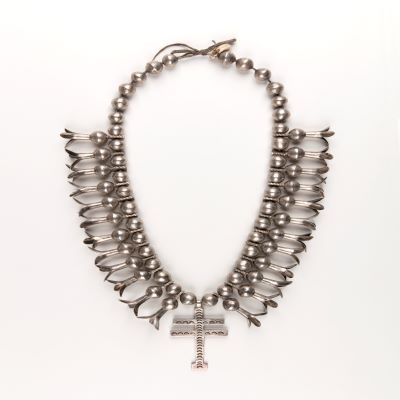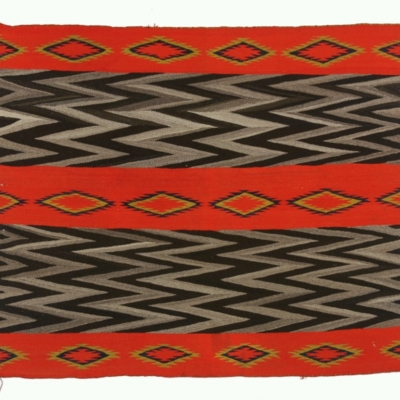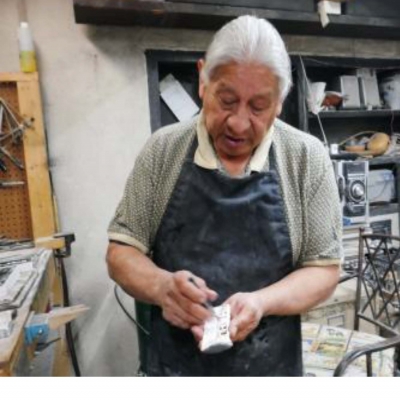Past Exhibitions
Turquoise, Water, Sky: The Stone and Its Meaning
April 13, 2014 through May 30, 2016
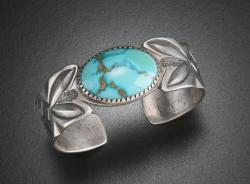
BRACELET
Bracelet, 1920–30, Navajo. Silver, Fox Mine turquoise. Museum of Indian Arts and Culture/Laboratory of Anthropology (10189). Photograph by Blair Clark.
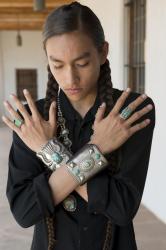
Young Man with Bow Guards (Ketoh)
The Navajo (Diné) and Hopi developed an arm guard to provide protection while shooting an arrow from a bow called a ketoh. It is often sports a central motif, decorated with silver and turquoise. While functional they are normally personal and ritual adornment.
Turquoise, Water, Sky: The Stone and Its Meaning highlights the Museum’s extensive collection of Southwestern turquoise jewelry and presents all aspects of the stone, from geology, mining and history, to questions of authenticity and value.
People in the Southwest have used turquoise for jewelry and ceremonial purposes and traded valuable stones both within and outside the region for over a thousand years. Turquoise, Water, Sky presents hundreds of necklaces, bracelets, belts, rings, earrings, silver boxes and other objects illustrating how the stone was used and its deep significance to the people of the region. This comprehensive consideration of the stone runs through May 2, 2016.
View the online version of the exhibition at http://turquoise.indianartsandculture.org
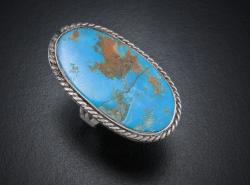
RING
Ring, 1930s, Navajo or Zuni Pueblo. Silver, Blue Gem turquoise. Museum of Indian Arts and Culture/Laboratory of Anthropology (40661/12). Photograph by Blair Clark.

